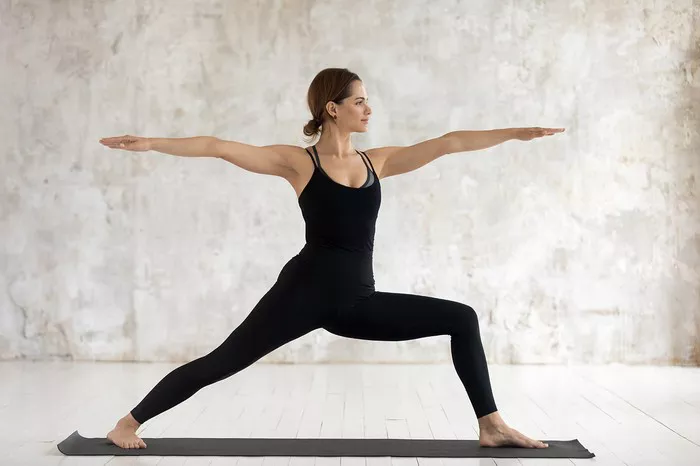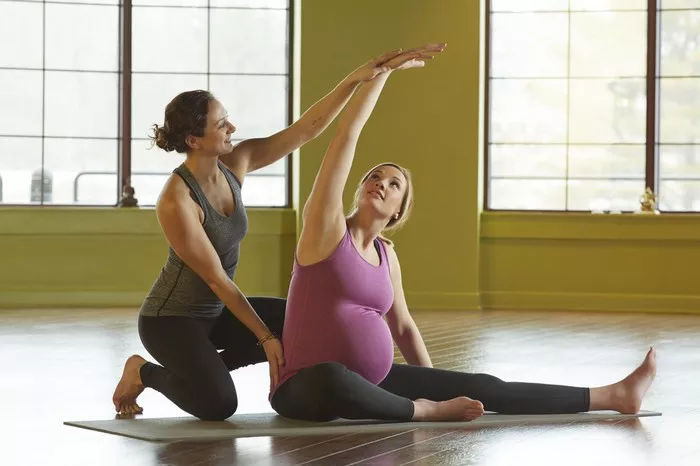Yoga has long been regarded as an excellent practice for overall health and wellness, offering numerous benefits to both body and mind. It is commonly used to enhance flexibility, strength, relaxation, and balance. Among the many yoga poses, the lotus position (Padmasana) is one of the most well-known. It is often practiced for meditation, as it creates a stable and grounded foundation, allowing for deeper concentration and mindfulness. However, for pregnant women, the safety of yoga poses, including the lotus position, is a common concern.
Pregnancy brings about significant changes in a woman’s body, and it is important to be mindful of which yoga poses are safe and which may require modification. In this article, we will explore whether the lotus position is safe during pregnancy, considering both the physical and emotional changes that occur during this special time. We will also look into alternative yoga poses that can provide similar benefits without compromising the comfort or health of the mother and baby.
What Is the Lotus Position (Padmasana)?
Before diving into its suitability during pregnancy, it’s essential to understand what the lotus position is. The lotus position, or Padmasana, is a seated posture traditionally used in meditation and pranayama (breath control exercises). The position involves sitting with the legs crossed in a specific way: the feet are placed on opposite thighs, with each foot resting on the thigh of the opposite leg. The spine is kept straight, the shoulders are relaxed, and the hands rest on the knees with the palms facing up or in a mudra (hand gesture).
The primary purpose of this posture is to create a stable and comfortable base for meditation. It helps to open the hips, encourages proper posture, and calms the mind, allowing for deeper focus during meditation or mindfulness practices. It is also believed to support the flow of energy through the body, promoting balance and calmness.
The Physical Changes of Pregnancy
Pregnancy brings a wide array of physical changes that affect every system in the body. From hormonal fluctuations to increased blood volume and changes in posture, these changes can have a profound impact on how a woman feels physically, as well as her ability to perform certain activities, including yoga.
Increased Flexibility: During pregnancy, the body produces a hormone called relaxin, which helps to loosen the ligaments and joints in preparation for childbirth. This can lead to increased flexibility, but it also means that certain movements might be more challenging or risky, as the joints are more prone to overstretching.
Postural Changes: As the pregnancy progresses, the body shifts its center of gravity to accommodate the growing baby. This often leads to a pronounced curve in the lower back (lordosis) and an altered pelvis position. These postural changes can make it difficult to maintain certain seated postures, like the lotus position, that require a neutral spine and stable pelvis.
Increased Blood Volume: Pregnancy increases blood volume, which can result in swelling in the legs, ankles, and feet. Long periods of sitting or certain positions might exacerbate this issue, making some seated postures less comfortable.
Abdominal Changes: As the baby grows, the abdominal muscles stretch and weaken. This can cause discomfort when performing postures that require a lot of internal pressure or deep core engagement.
Balance and Stability: The additional weight of the growing baby can affect balance and stability, especially in the later stages of pregnancy. This could make certain poses, including seated ones like lotus, less stable or potentially uncomfortable.
Is the Lotus Position Safe for Pregnancy?
Now that we have a general understanding of the physical changes associated with pregnancy, let’s examine whether the lotus position is safe during this time. While the lotus position is generally a comfortable pose for many, it can be challenging and may not be suitable for all pregnant women, depending on the stage of pregnancy and individual flexibility.
Hip Flexibility: One of the main requirements of the lotus position is significant hip flexibility. During pregnancy, the pelvis and hip region undergo various changes, with the ligaments becoming looser due to the effects of relaxin. This can either increase flexibility or create instability in the hip joints, making it more difficult to sit comfortably in the lotus position. For women with tight hips or those who struggle with deep hip opening, this pose may not feel comfortable, particularly as pregnancy progresses.
Pressure on the Abdomen: The lotus position involves crossing the legs in a way that can put pressure on the abdomen. For pregnant women, especially those in the second or third trimester, any additional pressure on the abdomen could be uncomfortable or even harmful. Additionally, as the uterus expands, the added pressure can cause discomfort and may restrict blood flow to the baby, especially in more advanced stages of pregnancy.
Balance and Stability: As the pregnancy progresses, maintaining balance in the lotus position becomes more challenging due to the shifting center of gravity and changes in posture. This can make the pose less stable and increase the risk of falls, particularly if practiced on an unstable surface or without proper support. Pregnant women may find it hard to maintain the posture for long periods, which can lead to discomfort or strain on the lower back.
Knee Stress: In the lotus position, the knees are bent and may be pressed down toward the floor. For pregnant women who experience swelling or discomfort in the knees, this position can exacerbate the issue. Moreover, if a woman has pre-existing knee issues or if the position puts excessive strain on the knee joints, it could potentially lead to injury.
Postural Concerns: The lotus position requires a tall, erect spine, which may be challenging for women as their bodies change throughout pregnancy. Postural imbalances, such as the forward-leaning posture that many women experience due to the growing belly, may make it difficult to maintain the ideal alignment in this seated posture.
Modifications and Alternatives for Pregnancy
While the traditional lotus position may not be suitable for everyone during pregnancy, there are several modifications and alternative yoga poses that can offer similar benefits without straining the body. The goal is to maintain a practice that promotes flexibility, stability, and relaxation, all while ensuring the comfort and safety of both the mother and the baby.
Easy Pose (Sukhasana): One of the most common modifications for the lotus position is the easy pose, or Sukhasana. This involves sitting cross-legged with the legs comfortably placed in front of the body. Unlike lotus, which requires the feet to rest on the opposite thighs, easy pose allows the legs to be placed in a more relaxed position. This posture can be modified further by placing a cushion or blanket under the hips to support the pelvis and promote a more neutral spine. It’s also easier on the knees and allows for better circulation in the legs.
Support with Blocks or Cushions: To alleviate pressure on the knees and hips, props like yoga blocks, cushions, or blankets can be used. Placing blocks under the knees or hips can reduce the strain on the joints and provide additional support, making the position more comfortable and sustainable. A bolster placed under the knees can help relieve any discomfort caused by long periods of sitting.
Chair Yoga: For pregnant women who have difficulty sitting on the floor, chair yoga is a fantastic alternative. Practicing seated poses in a chair ensures that the spine remains supported, and there is less pressure on the knees and hips. A stable chair with a firm backrest can be used to maintain proper alignment and stability during yoga sessions.
Seated Side Stretch: For a seated hip opener without the complexity of lotus, try a seated side stretch. Sitting cross-legged or in an easy pose, gently extend one arm over your head, reaching towards the opposite side. This can help open the hips and stretch the side body without compromising comfort.
Reclining Poses: If sitting on the floor or maintaining a seated posture becomes too uncomfortable, try reclining poses such as Supta Baddha Konasana (reclining bound angle pose) or lying on the left side in a supported position. These poses can provide similar relaxation and gentle stretching without the strain on the hips or abdomen.
Child’s Pose (Balasana): Child’s pose is a fantastic option for pregnant women looking to release tension in the hips, lower back, and shoulders. It is a resting pose that offers a gentle stretch while promoting relaxation. Modifying it by placing a cushion under the chest or hips can provide added comfort.
Additional Considerations
Consult with a Healthcare Provider: It is important for any pregnant woman to consult her healthcare provider before beginning a yoga practice, especially if she has any pre-existing conditions or complications during pregnancy. A doctor or midwife can provide guidance on what is safe and appropriate for the individual.
Listen to Your Body: Throughout pregnancy, it’s crucial to listen to your body’s signals. If a pose feels uncomfortable, painful, or unbalanced, it’s important to stop and make modifications or choose a different pose. Pregnancy is a time when a woman’s body changes rapidly, so flexibility and self-awareness are key.
Stay Hydrated and Rested: Pregnancy can be physically demanding, and yoga should not cause any undue strain. Make sure to stay hydrated throughout your practice, and take breaks whenever needed. If you feel lightheaded or dizzy, stop immediately and rest.
Conclusion
While the lotus position (Padmasana) is a beautiful and beneficial pose in yoga, it may not always be the best choice for pregnant women. The changes that occur during pregnancy, such as increased flexibility, postural adjustments, and the growing belly, can make the pose uncomfortable or even unsafe for some women. However, there are many alternative poses and modifications that can provide similar benefits without causing discomfort or risk.
Pregnancy is a time of profound change, and it’s important to practice yoga mindfully, focusing on poses that support and nurture the body. Listening to your body, working with an experienced yoga instructor, and consulting a healthcare provider will help ensure a safe and effective yoga practice during pregnancy.
Related Topics:

























